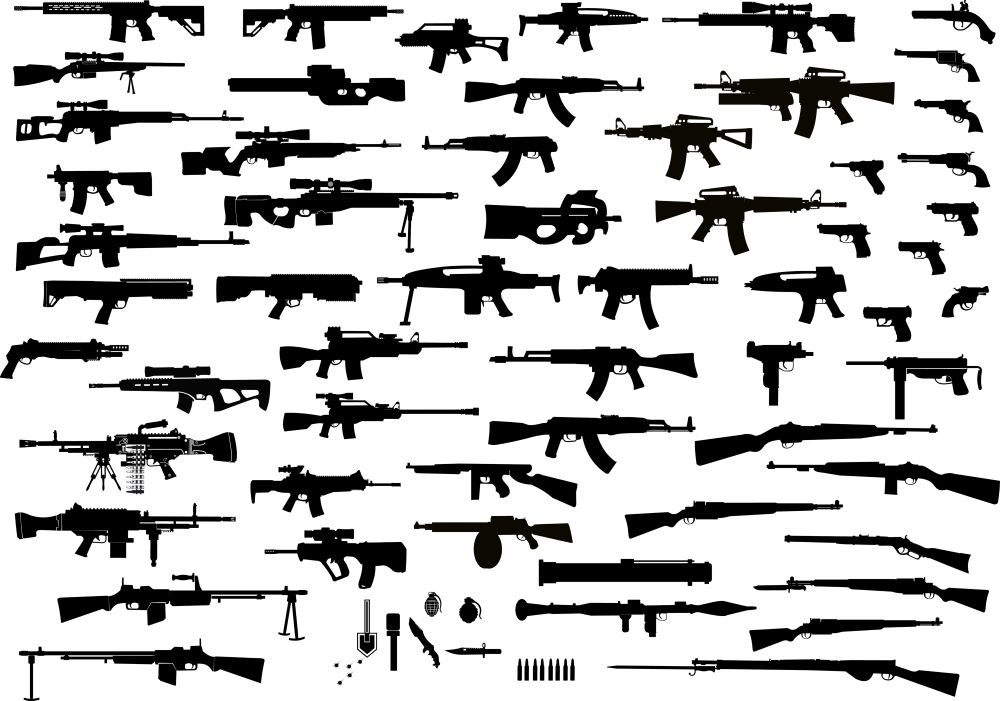- The United States needs to take measures now to drastically reduce gun violence via innovative technologies, such as RFID.
- Smart guns cannot be operated by nonauthorized users, so they would be an effective tool in saving lives.
The United States has a gun violence problem. Regardless of one’s political leanings, it would be hard to deny that fact. According to Trace.com research, the number of U.S. gun deaths in 2021, excluding suicides but including murders, accidents and justifiable homicides, reached nearly 21,000. What’s more, the number of mass-shootings in the nation was nearly 700, two-thirds of all U.S. cities experienced more homicides last year than in 2020, and 22 people died in school shootings, while 80 more were injured.
The estimated number of guns sold in 2021 reached 18.8 million, while the estimated number of adult Americans who own a firearm hit 81.4 million, and nearly 2% of U.S. gun dealers had their licenses revoked between 2010 and 2019 due to violations. Meanwhile, approximately 68,000 guns were recovered from crime scenes in 2020 that had been purchased less than seven months earlier, and the NYPD recovered nearly 200 “ghost guns” (which don’t have serial numbers and difficult to trace) at crime scenes.
The situation has become so bad that the Build Back Better bill has earmarked $5 billion in funding for community violence intervention. Yet despite all this, six U.S. states—Iowa, Tennessee, Texas, Arkansas, Montana and Utah—passed permitless concealed carry laws last year, and more may follow that deadly path. Like I said, the U.S has a gun violence problem. Given the myopic mindset of many American lawmakers, it seems doubtful this is going to change any time soon. But perhaps radio frequency identification (RFID) can help alleviate the situation.
Smart Guns Can Save Lives
Ralph Fascitelli, the former president of Washington CeaseFire and a national proponent of a technology approach to addressing gun violence, reached out to let me know about a recent article of his, published at Medium.com, which he described as his renewed quest to bring smart guns to the forefront of the gun violence discussion. Fascitelli’s thoughtful essay details why smart guns have not yet become the solution to this public health challenge — and why they should.
“Over a million Americans have been shot in the past ten years, resulting in an astounding 12.6 million years of life lost,” Fascitelli wrote. “This statistic is supported by data from the Giffords gun safety advocacy group and a CDC data review. 45,222 Americans died from firearms in 2020, a number 43% higher than ten years ago. Of these gun deaths, 24,292 were suicides, 19,384 were homicides, and 535 were accidents from law enforcement or undetermined causes.”
With gun violence continuing to spike despite national and state legislative and public health campaign efforts, Fascitelli champions smart guns as a means of bringing down these staggering statistics. As he explains, such guns “can only be operated by the authorized user (i.e., gun owner) who authenticates usage, thus rendering it useless in the hands of children; underage teenagers; criminals who steal it; and non-gun owning individuals’ intent on suicide with access to somebody else’s gun.”
RFID Can Help Prevent Suicides, Homicides, and Accidents Involving Firearms
RFID Journal has covered smart gun technology in the past (see Smart Guns Should Be an Option, Are Smart Guns the Answer? and RFID Makes Guns Smarter and Safer). Fascitelli himself contributed an article on the subject in 2017, in fact (see Why RFID Is the Only Viable Path for Life-Saving Smart Gun Technology), in which he described “a technological solution that could save upwards of 10,000 lives annually by reducing the incidence of child firearm accidents, suicides involving third-party firearms and homicides committed with one of the 250,000 guns stolen annually.”
As Mark Roberti noted in the second article cited above, “Preventing a terrorist or mentally disturbed individual from buying a new gun and using it against innocent people is everyone’s goal. Perhaps there is a research organization or a government willing to invest in this technology and develop it further. Perhaps, one day, it could help to reduce the number of people killed accidentally — and on purpose — worldwide.”
Between the COVID-19 pandemic and the genocidal war in Ukraine, we’ve seen far too many deaths in our headlines these days. RFID-based smart guns can help to avoid more needless death. If you’re interested in learning why such weapons could significantly reduce the U.S. gun violence epidemic, check out the above-linked articles, as well as Ralph’s essay for Medium.
This article originally appeared in CS sister publication RFID Journal and has been edited. Rich Handley has been the managing editor of RFID Journal since 2005. You can contact Rich via email.
If you or someone you know might be at risk of suicide, call the National Suicide Prevention Lifeline at 800-273-8255, text TALK to 741741 or visit SpeakingOfSuicide.com/resources for additional information.
Note: The views expressed by guest bloggers and contributors are those of the authors and do not necessarily represent the views of, and should not be attributed to, Campus Safety.













